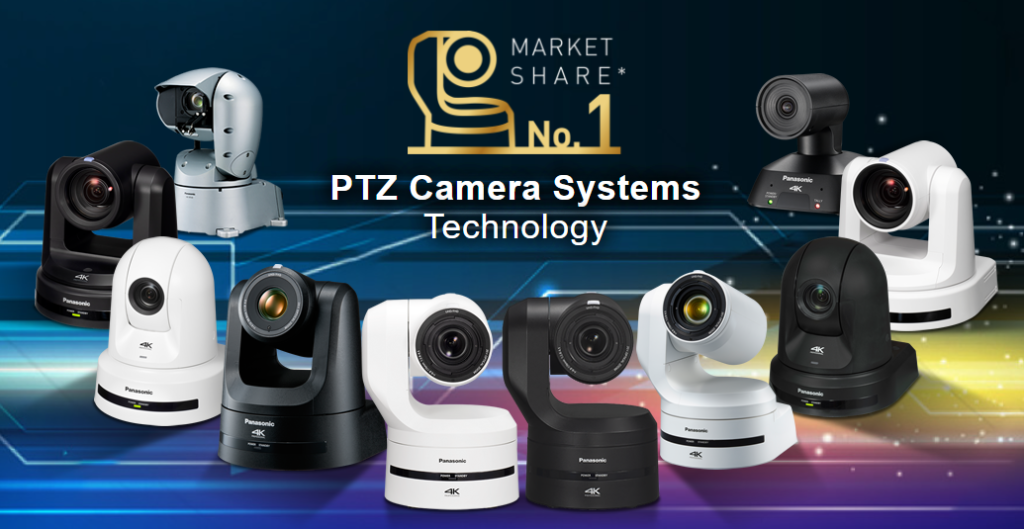Panasonic PTZ Camera Systems Technology
By Jennifer P

Acting as a Small Professional Camera Operator to Meet Expectations. Facing Customer’s requirement and evolving together. Panasonic’s concept of “Shooting Beautifully” is a prerequisite to enabling natural camera work as if shot by a professional Camera Operator. Our thoughts on development are the same with PTZ cameras that require remote operation. We will continue to be particular about every little detail such as the pan-tilt performance, vibration correction, image quality and operation response, incorporate industry-leading technologies and create PTZ cameras that will lead the industry.
Even after conducting our business, we will provide after-sales follow-ups and updates in order to build better relationships with each other. We will continue to always work closely with our customers to develop our products.
Panasonic PTZ Camera’s Four Core Technologies
1. Picture Quality
Panasonic’s PTZ cameras combine lenses and video processing cultivated in the development of broadcast cameras and in addition to improving the camera performance, realizes detailed panning technology. Natural camera work is achieved with the smooth panning and highly accurate vibration correction. We have combined the vibration correction according to the movement of the camera with lens and video processing cultivated in the development of studio cameras and system cameras. Thanks to these technologies, it is possible to create the same natural movements shot by professional Camera Operators.
2. Easy Operation
Panasonic’s PTZ cameras feature the preset memory function that can accurately stop at the control position and can be easily and stably operated with the intuitive remote controller design. Designed to reduce the complex installation process and costs at the time of introduction. Panasonic’s remote camera controllers are developed to enable easy operation and long-term use by users. Immediacy and certainty are required on-site, so they have been designed with consideration to the placement of levers and buttons in the position of the user’s hands. Furthermore, the arrangement of up/down/right/left levers and iris focus button can be switched, so it can be customized to suit your control style. To make it easier to incorporate it into the system you are using now, it has a wide range of compatibility from the latest models to successive models and devices of other companies.
3. System Flexibility
The IP technology cultivated with Panasonic’s security cameras is applied to the PTZ camera. Up to 200 cameras can be controlled with a single remote controller (serial, IP control). Also, by supporting a LAN connection, restrictions on the distance between the shooting site and settings and operations can be resolved, which contributes to improving work efficiency of content production and reducing costs for system introduction. We have introduced the power supply using a LAN cable (PoE technology) ahead of the industry, and have improved installability by proposing a one cable solution that combines IP technology transmission (video/control). The number of supported control protocols is one of the highest in the industry. We partner with many software development companies to make regular updates to reflect the voice of our users. Therefore, the latest features are always included in Panasonic’s PTZ camera, and we will continue to provide flexible shooting.
4. Reliability
At Panasonic, parts are assembled in a strict clean room to preserve the high level of professional quality. In the quality/durability tests, we strive to inspect and improve quality from the user’s point of view. The assembly of camera lenses is carried out in a clean room with a thoroughly controlled manufacturing environment to prevent dust and dirt from getting inside the equipment. This is because if even a small amount of dust adheres or mixes inside the lens that reflects high-definition objects, it may occur of quality deterioration and camera defects.
Read the full article from Panasonic HERE
Learn more about Panasonic HERE

